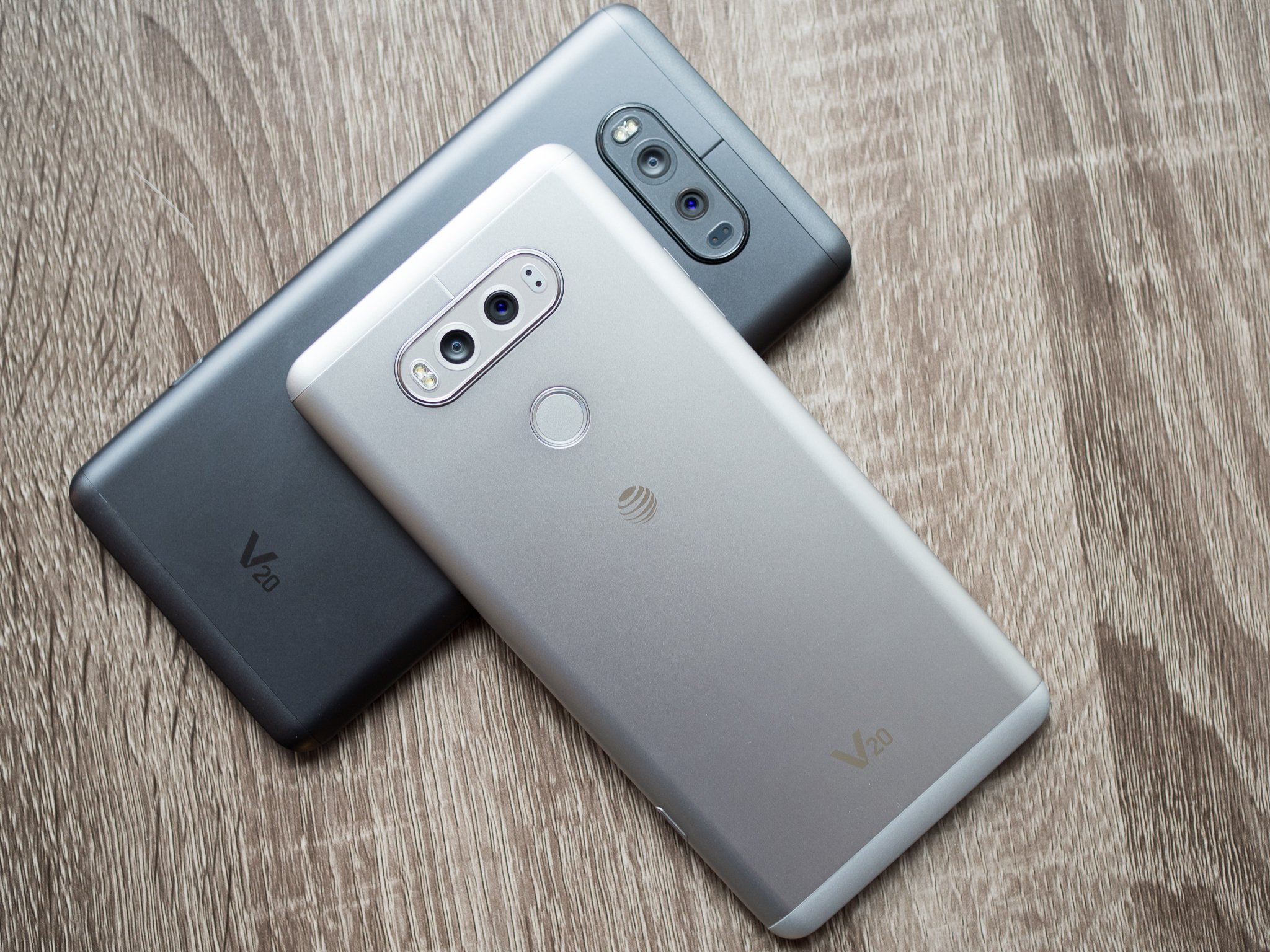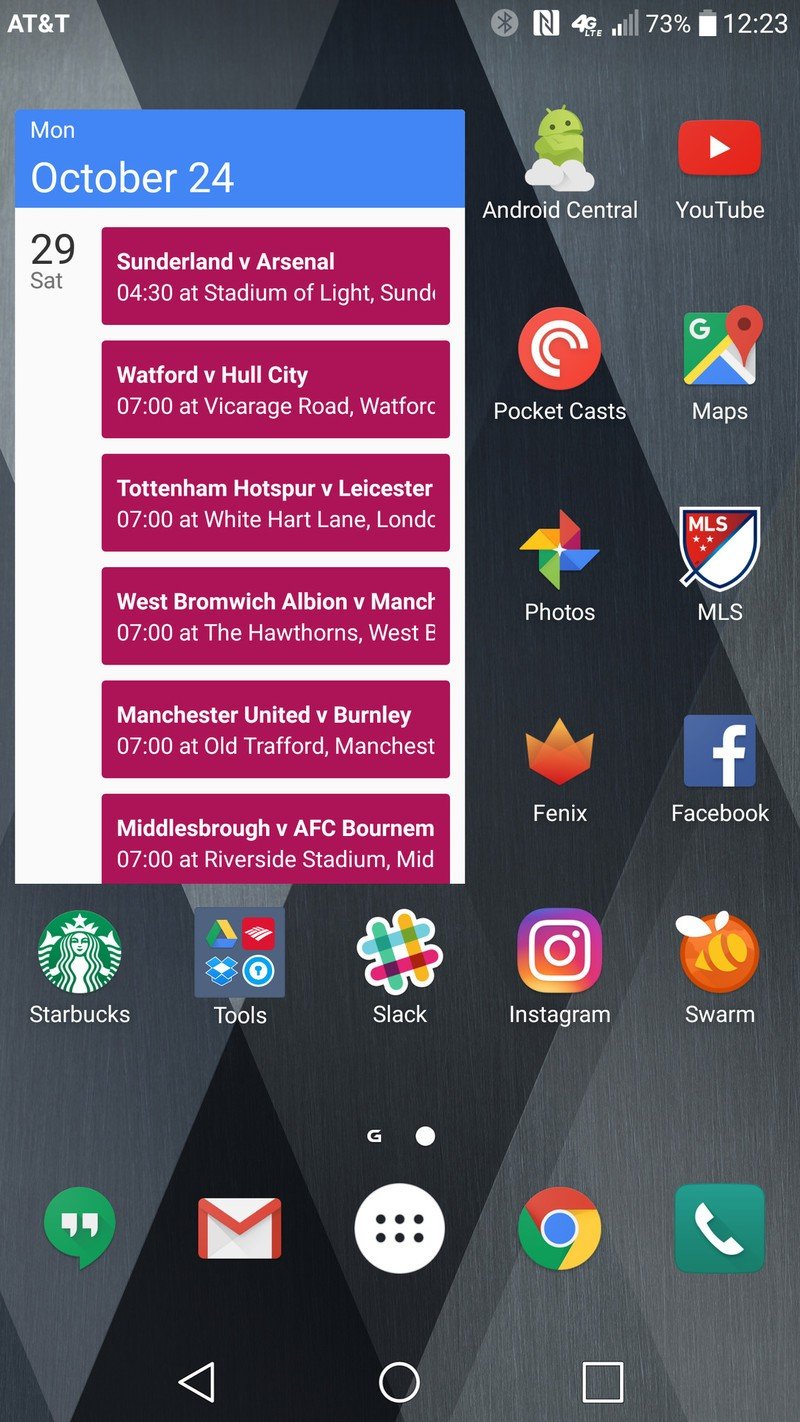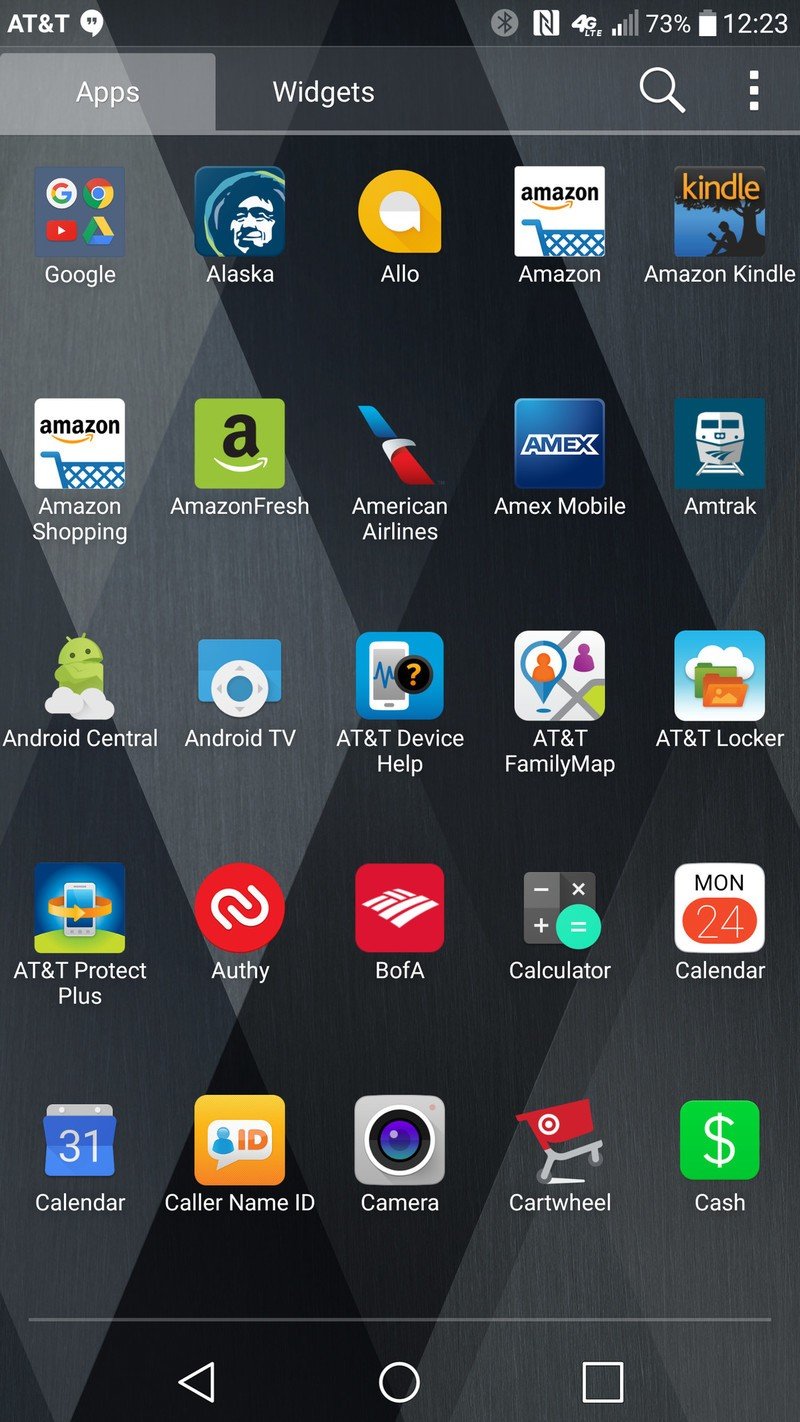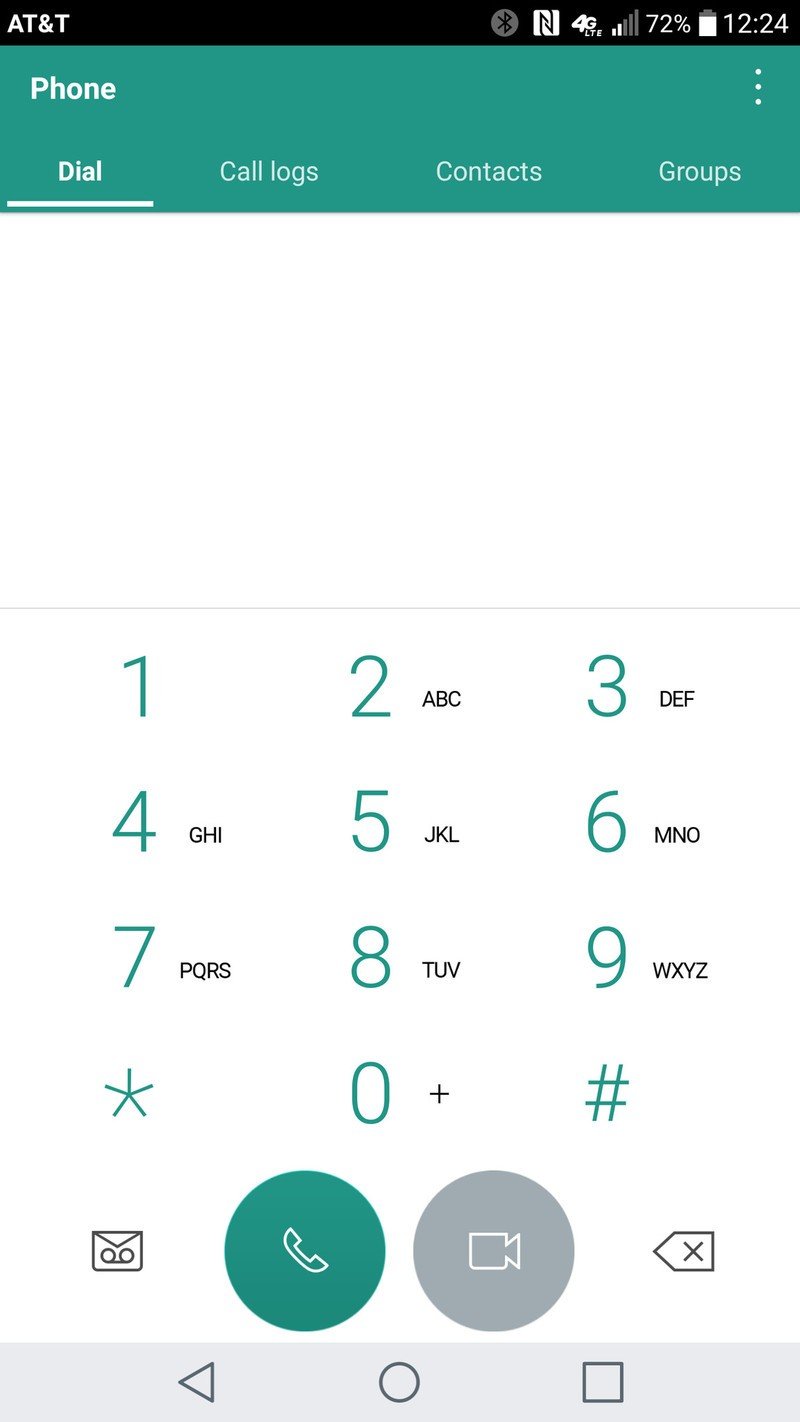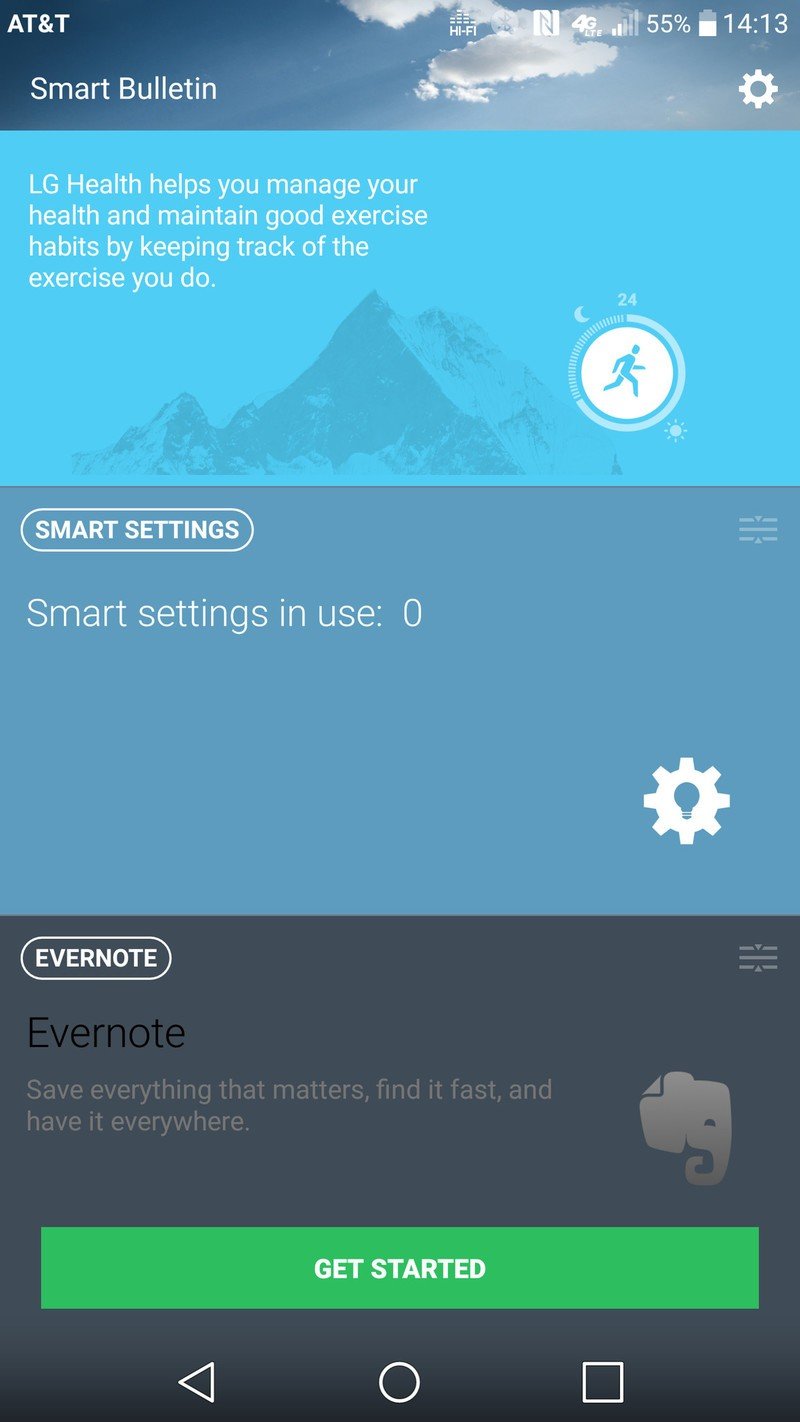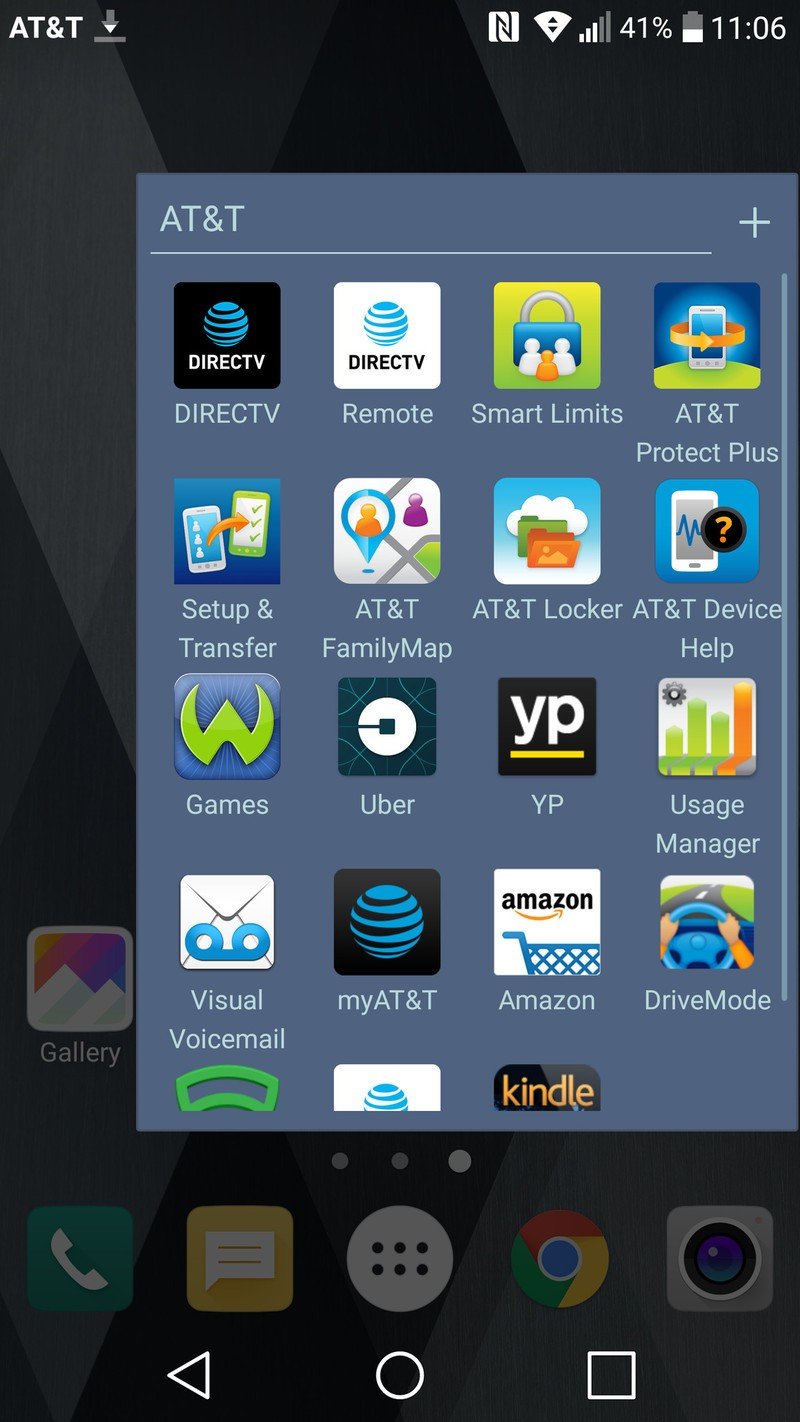LG's flagship "G" series of phones have been solid hits for the company, particularly with the G2 and G3 that outpaced the competition in many ways. But seeing an opportunity for an even bigger and more feature-packed phone, LG unveiled a new device and entirely new line with the V10 in 2015. It was huge, rugged and packed an incredible number of features for a single phone — the selling point was that it was for "content creation" instead of consumption.
In 2016, the general-appeal flagship LG G5 has fallen flat, and is hardly on the radar of those looking for a high-end phone. Interestingly enough, the V20 looks and feels effectively like a larger G5 — though it retains many of the features and much of the V10's DNA. This combination of approaches makes the V20 dramatically more appealing to a wider range of potential customers, but at the same time works to differentiate by packing as many features and specs as possible into a single big phone.
With two screens on the front, two cameras on the back, a removable battery, Android 7.0 Nougat running the show and a pile of content creation features, the V20 is quite a handful. It's also commanding a large handful of money to acquire one. With LG failing to get out of the blocks with the G5, and building on a narrowly successful V10, can the V20 draw from both to be a success? We're here to explore just that in our full LG V20 review.
About this review
I (Andrew Martonik) am writing this review after three weeks using a pre-production LG V20, followed by six days using an AT&T retail version of the phone. The phones were used on the T-Mobile network in Seattle, WA and San Francisco, CA, as well as the AT&T network in Seattle. Both phones were provided to Android Central for review by LG.
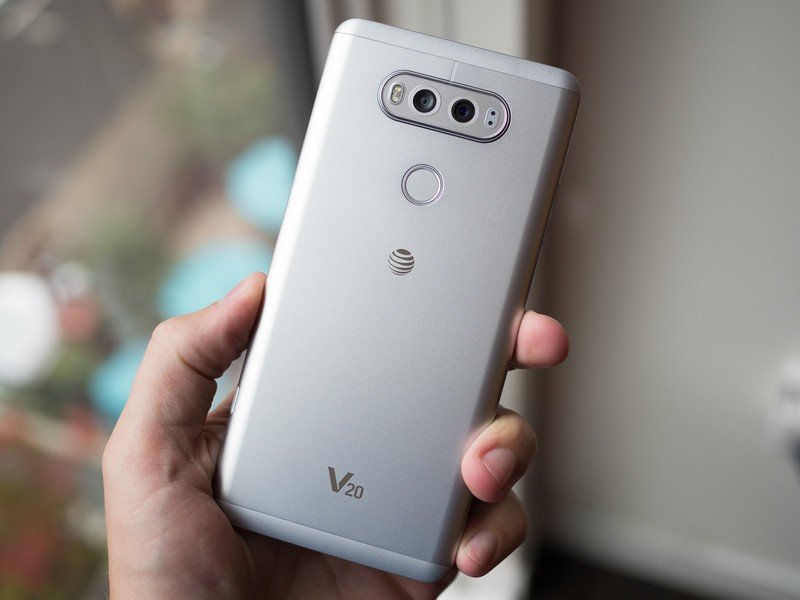
Less rugged, more appealing
LG V20 Hardware
Last year's V10 was a physically imposing device, and while that was appealing to a small group of people it wasn't the right strategy to be a broad hit. The V20 takes many of the hardware features that made the V10 appealing — a large screen, removable battery, dual cameras and a hefty metal frame — and implemented them with far more subtlety and efficiency. You won't find a thick rubber back or heavy stainless steel sides anymore, but you'll get something that's a bit easier on the eyes while still being extremely sturdy.
The one area where the V20 doesn't differentiate from the V10 is in its sheer size. Though it has trimmed down a bit in terms of weight, the V20 is still a massive phone. For a point of comparison, the V20 is actually larger in each dimension than the iPhone 7 Plus, which itself is also known for being a very large phone. At 159.7 mm tall it's even a smidge taller than the huge Nexus 6, though thankfully a few millimeters narrower and thinner.
Get the latest news from Android Central, your trusted companion in the world of Android
- 5.7-inch display
- 2560x1440 LCD
- Secondary screen
- 16MP f/1.8
- Secondary 5MP f/2.4 wide-angle
- Laser, phase-detect, contrast auto focus
- 5MP front camera
- 3200 mAh
- Removable
- Quick Charge 3.0
- Qualcomm Snapdragon 820 processor
- 4GB RAM
- 64GB storage
- SD card slot
So what takes up all of that space? Well, from the front it's all about screen and bezels. Starting with a 5.7-inch display means you're automatically going to have a large phone — add to it the "second screen" and that makes the phone a bit taller. Add in about average-sized bezels, a front-facing camera and an earpiece for calls, and now you're in "huge" territory. Despite its size and focus on audio LG didn't go with front-facing stereo speakers, though, leaving the output to a single downward-firing speaker to the right of the USB-C port.
More: Complete LG V20 specs
The display itself — a QHD "Quantum Display" LCD — is really good, and unlike the past generation of LG phones gets very bright and stays vivid even in direct sunlight. It's not quite on the level of Samsung and the new Pixel XL, but it's darn close — I like it a lot.
The V20 is unapologetically massive, like the good 'ol days.
The glass around the screen doesn't extend fully to the top and bottom bezels, but flows nicely into the plastic (yes, the top and bottom are plastic for RF reasons) with curves shown off originally on the G5. It also smoothly transitions into the metal sides, which are actually part of the full removable back plate of the phone. LG has been one company that consistently puts value in having a removable battery in its phones, and it was basically a given that the V20 would follow suit. Rather than using a peel-off plastic back or odd modular bottom, LG went with a known but not often used strategy of a solid metal removable back.
The back plate is thick and extremely rigid, which is important — this bit of metal is the primary thing you hold on the phone every day, and the feeling of it would completely make or break the physical experience of the V20. The phone feels as though it's a solid piece of aluminum, even though the top and bottom are plastic, simply because so much of what you hold is this big chunk of metal. Now it honestly doesn't feel quite as nice as the Pixel XL, Moto Z or HTC 10 — you really can't fake your way to a unibody feel 100% — but it's damn good and much better than previous phones with removable doors. Importantly for LG, it feels like a different class of manufacturing from the G5's calamitous modular bottom and odd coating over metal.




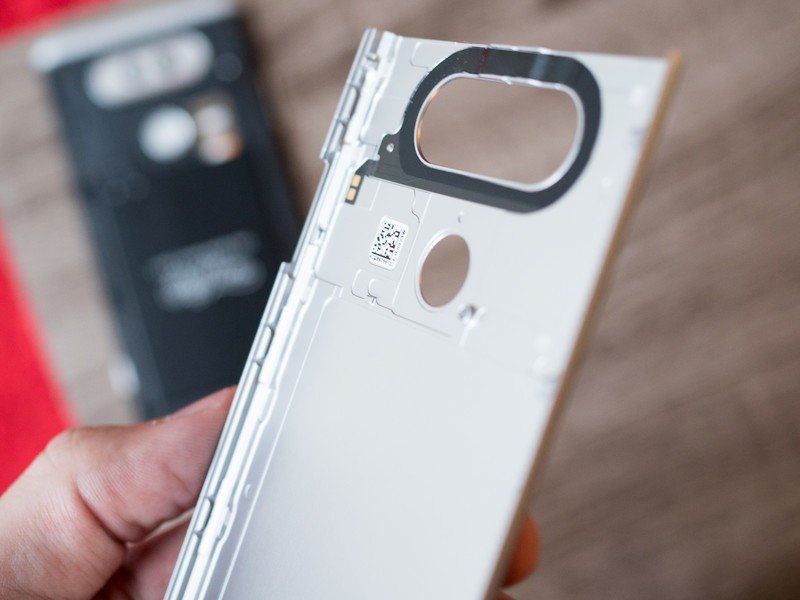
This design isn't inspiring; it's materials taken to their expected conclusion.
Though LG clearly executed its physical elements well, I don't think it quite nailed the looks. This is a big silver or titanium grey rectangle with no eye-catching design flourishes — and that's really saying something, as I even found the Pixel XL (which many panned as being boring) to be appealing. The V20's design just feels ... aggressively average. Though the metal back is very well done, the subtle difference in texture and sheen between that metal and the plastic is easy to notice and tough to unsee once you do. The shimmery thin metal trim around the camera pod looks and feels more like cheap plastic. It's a huge grey rounded slab, no matter what angle you look at it from — there's nothing stellar to point to as a design feature that keeps you interested in it.
Design is subjective, of course, and some may appreciate the simplicity and lack of flare with the V20. And if you do, the fact that it's built extremely well and executed properly in terms of the hardware is extremely important. You're getting an unapologetically big phone that packs a ton of specs inside, including power user features like an SD card slot and removable battery, without compromising much in terms of feel or build materials — that's a win.
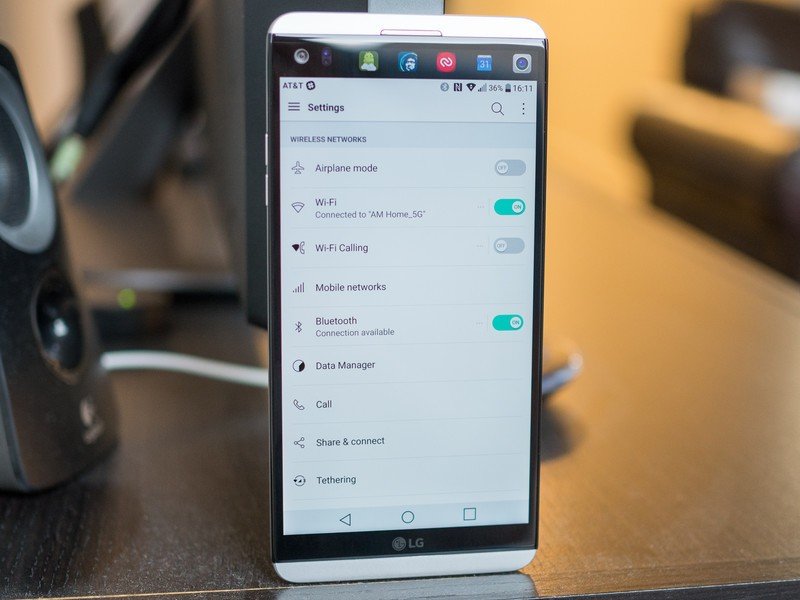
First* with Nougat
LG V20 Software, experience and battery life
LG is framing the launch of the V20 by the fact that it's the "first" phone to launch with Android 7.0 Nougat out of the box, and for all intents and purposes it succeeded in doing so. The phone launched in South Korea back at the end of September with the then-latest version of the operating system mere days before Google unveiled the new Pixel and Pixel XL running Android 7.1 — so, mission accomplished. Those of us buying in the U.S. will technically be getting the second phone with Nougat pre-loaded, as the Pixels have already started shipping and the LG V20 doesn't arrive in U.S. carrier stores until October 28. This "issue" was mostly created by LG's release cadence, where it takes nearly two months after announce to get a phone out and on sale in the U.S.; but it doesn't seem too keen to change that right now.
Those particular quibbles aside, I applaud LG's commitment to launching with the latest possible version of Android at the time it actually announced the phone. LG has obviously been a long-standing partner with Google and that surely played a role in its desire to launch with Nougat, though simply choosing to release a phone in the fourth quarter always helps you coincide with the latest Android platform release as well.
LG's take on Android 7.0 is a bit more subdued than its implementation of Android 6.0, and that's a welcomed change. The quick settings, notification shade and settings have all taken on a stark black-on-white look that's clean and easy to navigate, and isn't too far removed from what you find on a Nexus or Pixel today. LG has also dropped a lot of the shadows and crazy colors, simply going to a flatter overall look with splashes of a turquoise color for effect here and there.
LG's latest take on Android is subdued and simple in many ways.
Functionally, things are a bit improved as well. LG's navigation buttons, while still customizable, are now actually standard buttons that interact with the system properly in terms of full-screen mode and the back button switching to a keyboard collapse button where appropriate. Its Recents menu is also Nougat-standard, including multi-window support.
Unfortunately you still get a handful of reminders that you're using LG's software. It has kept around the dopey animations on the lock screen and home screen, and the design of the launcher seems a bit stuck in the past throughout. LG's default keyboard is a bit of a mess as well. Thankfully you can get past most of these issues with a swap of the launcher and keyboard — as I quickly did on my review units — to get something a bit cleaner and more modern.
LG unfortunately still caves pretty hard to the carriers in terms of bloatware, with my AT&T model shipping with an abhorrent 20 apps from the carrier, plus additional steps in the setup process and changes to the settings. It's all too much, and it's an area I wish LG could put its foot down and stop.
Bloatware is still a problem, and you'll want to switch out the launcher and keyboard.
When it comes to performance, LG does a pretty good job keeping its software running quickly with the Snapdragon 820 processor and 4GB of RAM. For the most part everything was snappy and even heavy apps or multitasking weren't an issue. I did however come across a few instances where things would chug along at a slower-than-usual pace, though, and sometimes I went through a minute or two when apps took an extra moment to open up. After thinking this was an issue with my pre-production version I was disappointed to see the same happen on the full production AT&T model as well. To be entirely fair the instances of slower performance were few and far between, but they happened often enough that they were frustrating.
Maybe I'm a bit spoiled having just spent over a week with the Pixel XL ahead of reviewing the production model of the V20, but the contrast in speed and overall fluidity between the two is quite noticeable. The Pixel XL is just downright faster, smoother and quicker to do everything. As I noted in my review of the Pixel XL it's almost an imperceptible difference most of the time ... but when you compare it side-by-side to another phone, like the V20, that's just a little slower you can see how impressive Google's software is.

Second screen
Just like its predecessor the V20's "second" screen isn't really physically a second screen as much as it's just a little extra bit at the top of the main display panel that operates independently. Aside from in the camera app, the extra portion is never made available as a true extension of the main display — it's purely dedicated to the second screen experience of glanceable and always-available information.
The small 160x1040 resolution panel can be configured to display up to seven different panels of information, which you can swipe through left or right independently of what's on the main screen. You can see things like a set of five "quick tools" for most-used functions, shortcuts to five favorite apps, music player controls or quick contacts. I mostly used the quick tools and favorite apps launcher, but never really got into the habit of using the second screen.
The second screen is neat, but far from useful on a daily basis.
Much like I found with the "edge screen" on the Galaxy S7 edge (and Note 7), the second screen doesn't really do much other than duplicate functions I can already do very quickly elsewhere on the phone. Just as easily as getting to the quick tools I can swipe down the notification shade. Just as quickly as swiping and then tapping on a recent app in the second screen I could just hit the Recents button in the navigation bar ... and so on and so forth. Add to that the fact that the second screen is at the top of an extremely tall phone, and it makes it (literally) a bit less accessible than the same functions elsewhere on the phone.
The second screen is also kind of in the way when you want to reach up and swipe down the notification shade — I accidentally opened apps or toggled Wi-Fi more than a few times when I was just trying to swipe down to view notifications. If you have the second screen enabled to work when the screen is off you can get some accidental touches on it while it's in your pocket, too — while it's useful to work with the second screen to quickly toggle the sound profile when the screen is off, I more than once pulled out my phone to the flashlight having been toggled on accidentally.
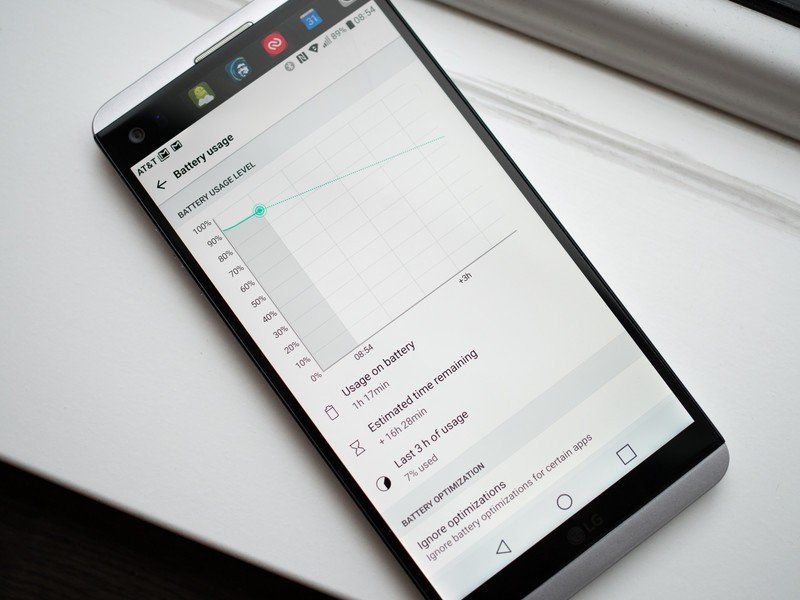
Battery life
The LG V20's battery is removable and swappable for a fresh cell at any time, but that means that the battery itself is a tad smaller than you'd likely get if it were permanently embedded. 3200 mAh isn't that small, but given the fact that smaller phones like the Galaxy S7 edge and Google Pixel XL manage to have 3600 and 3450 mAh batteries, respectively, it's clear there's a trade off going on here.
You'll get through a day with a bit to spare; but how about that removable battery, eh?
LG's done a pretty good job at getting battery life to where it needs to be on the V20, but it honestly comes up a bit short of my expectations. Thanks to the big QHD display, always-on second screen and below-average battery size, the V20 is good for a full day of use ... but it doesn't always do it with much left in reserve. My typical day, as I've described many times in reviews, involves a few hours of "screen on" time, lots of time spent on Wi-Fi, all of my email and social media accounts syncing, plenty of time spent listening to music and podcasts, and frequent use of Maps, Drive, Twitter and the like.
With this usage, the V20 was good for about 15-16 hours to be completely dead. That means on average I'd be ending my day with something like 10-15% battery in the tank, which is right on the cusp of being worrisome for me. That extra 5-10% drop off of capacity compared to other big phones could add enough padding that I wouldn't ever be worried about battery life on the V20. As it stands, though, it's good enough, but not spectacular — especially for a big phone.
And for some, the combination of a removable battery that can be swapped for a 100% charge in seconds and Quick Charge 3.0 support is enough to make up for that. I personally have no desire to manage charging and keeping around phone-specific batteries, so I leaned on Quick Charge 3.0 instead, but some people are still clinging to the idea that a user-replaceable battery is a thing they need. More power to 'em.
Quad DAC and high-res audio
LG has hung its hat on high-resolution audio with the V series, and the V20 sports a 32-bit Quad DAC that you can quickly toggle on when you're using wired headphones. As I continually say when reviewing phones I'm not an audiophile in any way, though I do own and use a few pairs of nicer-than-average headphones. But no matter what you're listening to or what pair of headphones you have plugged in, you can clearly tell a difference in the audio quality from the high-end DAC on the V20. The audio is richer and fuller, with a wider range, and there's absolutely no downside here — you just get better audio any time the phone is outputting to the headphone jack.
My big question is this: if you didn't have access to the higher-quality DAC at the press of a button, or you were just listening to music on another phone with an inferior DAC, would you actually notice the difference? I'd posit that most people wouldn't, and while some of that comes down to the aspect of "not knowing what you're missing," there's something to be said for too much hype being put into these nicer DACs. Everyone will notice some sort of benefit, and better-sounding audio is always a good thing, but few people have the hardware or the ears to make the 32-bit Quad DAC in the V20 a selling point for the phone.

Double the fun
LG V20 Cameras
The V20's camera setup is something LG can be proud of, though it isn't materially different from what we saw several months ago with the G5. This is the same dual camera componentry, pairing a 16MP sensor with a "standard" lens alongside an 8MP sensor with a wide-angle lens. You also get a hybrid auto focus system that combines laser, phase-detect and contrast auto focusing to select the best one for the scene.
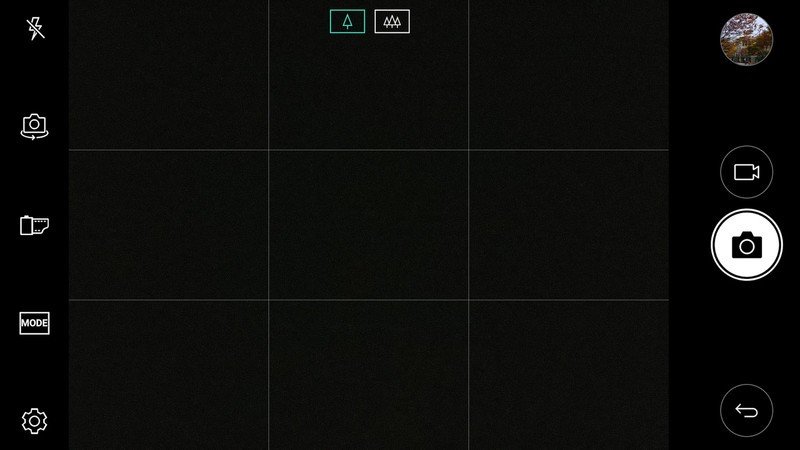
LG's camera interface is pretty simple but brings your most-used functions easily to hand on the left edge of the interface, including the second screen for toggling between shooting modes. Frustratingly it's still missing an HDR toggle, though — you need to hop into the full camera settings to use it. The V20 also offers an extremely comprehensive Manual shooting mode, including a Manual video mode, which is a photographer's delight. The one shortcoming I find in the camera's software is its speed. Sometimes it's lightning-quick to launch and take photos, and other times it stutters and lags while opening or switching between the gallery and camera — I expect more from this high-end of a phone.





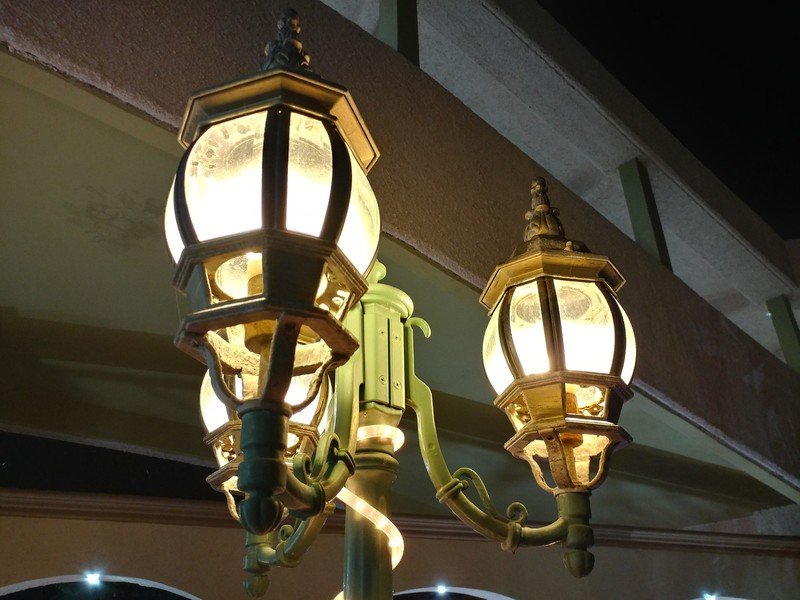













I absolutely love shooting with the V20 simply because of its dual camera setup that offers so many new and exciting opportunities, and those who have used the LG G5 know what I'm talking about. Just about every photo your friends and family post online today is taken with more or less the same focal length, providing the same look of "I took this with a smartphone and uploaded it." With a tap on the screen you can switch the V20 to a wonderful wide-angle lens that takes super-interesting photos, and that's wonderful. I found myself taking somewhere between one-third and half of my photos with the wide-angle lens just so I could mix things up a bit. It's a real treat.
The only upsetting thing here is the dropoff in quality on the secondary camera.
When it comes to overall quality, the main 16MP sensor is obviously the better of the two — and it's awesome. The main camera takes great, vivid photos that are if anything a slight step behind the likes of the Pixel and Galaxy S7 edge, but only in some situations. In most scenes, I saw literally no difference in quality between the V20 and the competition, and that lines up with what we found when spending time with the G5 earlier this year. LG is doing things properly here.
The real issue for me is the dropoff in quality when you switch to the wide-angle sensor. Its lower resolution and higher f/2.4 aperture don't handle low-light situations in any way the same as the better main camera, and that's extremely disappointing. During the day the wide-angle camera does just fine, taking some amazing photos, but when the lights dim you can no longer rely on that wide-angle camera to give you the quality you expect, and that's disappointing. If LG could have figured out how to put an exact duplicate of the main sensor behind the secondary wide-angle lens, I really wouldn't be able to find a complaint with this whole camera setup.
In terms of video, the V20 boasts all of the right features. Beyond its Manual video mode that I mentioned above, the V20 offers up to UHD video recording, tracking focus, electronic "steady recording" and super-high-fidelity audio recording from multiple mics. Videos taken on the V20 are steadier than most thanks to the combination of OIS (optical image stabilization) and EIS (electronic image stabilization), but the stabilization offered in situations like walking down the street come up well short of what Google does on the Pixels — to the point where I wouldn't be surprised if a software patch was coming to improve things. When recording the mics handle a high range of audio without distorting, though — that's really impressive. LG easily has the best overall setup for recording video on a smartphone, even if its image stabilization isn't as smooth as Google's.

For the power users
LG V20 Bottom line
The V20 checks a lot of boxes in terms of features and specs: big bright screen, high-end internals, great cameras, fast charging, removable battery, SD card slot, fingerprint sensor, Android 7.0 Nougat, hi-fi audio, manual camera controls and so much more. But in putting this all together into one phone, it seems to be missing that extra little bit that makes it feel like a complete product to me.
The V20 includes a ton of specs, but is so big that it's unmanageable for many people. The removable battery is good for a small group of potential buyers, but the battery life suffers a bit and more importantly the build of the phone takes a hit (also losing waterproofing) to integrate the removable battery door. The second screen seems neat, but makes the phone taller and isn't all that useful on a daily basis. LG pushed to get the V20 running Android 7.0 Nougat out of the box, but its customizations still feel a bit mismatched and we have no solid prospects for regular security updates or future versions of Android.
The V20 is a great phone for power users, but some will notice its lack of cohesiveness.
There are two ways to measure the V20. The first is how it compares to its predecessor, the V10: the new model gets the hardware right, has better software and has retained the unique features of a second screen, removable battery and advanced camera and audio capabilities. It is quite clearly a huge upgrade from the V10, and in many ways a better complete device than the LG G5 as well.
Next, and more importantly, we have to look a bit more critically about how the V20 compares to its immediate competition from Samsung, Google, Moto and yes, Apple. Each of the flagships from the aforementioned companies offers a similar screen size, the same basic specs, a good camera experience, fast charging and long battery life, and in each case a better overall hardware build than the V20. Yes LG can lean on its great dual-camera setup, its slightly larger display, a removable battery and hi-fi audio ... but some people would give up one or more of those features for a more cohesive phone experience.
Late in 2016, smartphones are still all about compromises. Every single decision a company makes about a spec or feature has something else tied to it. With the V20, LG focused on getting the most stuff crammed into a single phone, and in the end the trade off was getting a phone that's not quite built as well as the competition, is a bit to big for many hands to manage and lacks the software polish to go against Google's own flagship.
Those who enjoyed the V10, the feature and spec junkies who are self-described "power users," will be all over it; and rightfully so, as the V20 does just about everything you could want and does it pretty darn well. The general consumers looking for a more thoughtful, well-balanced and considered phone are likely to drift in the direction of LG's high-end competition.

Andrew was an Executive Editor, U.S. at Android Central between 2012 and 2020.
